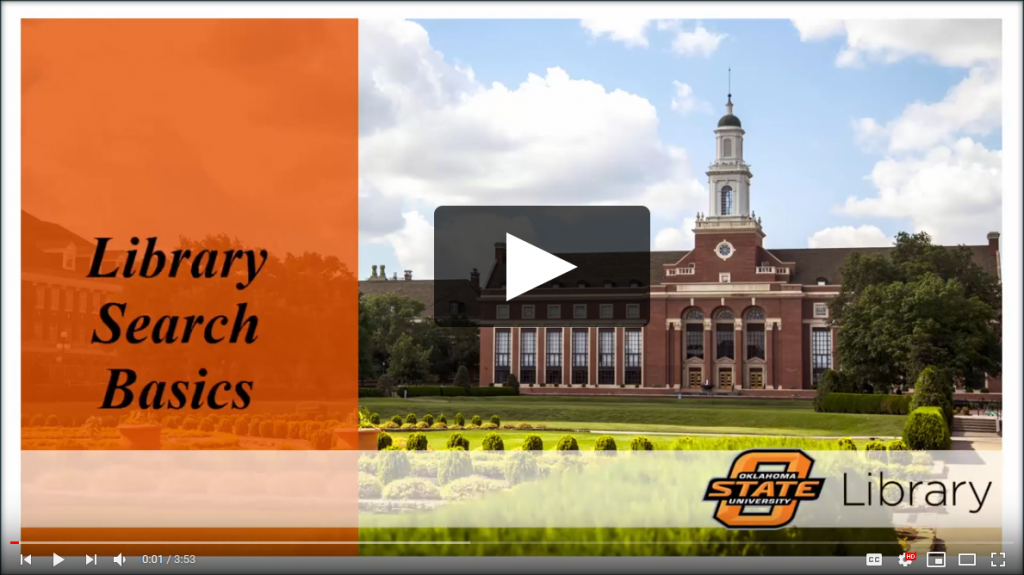Part 3: Finding sources
We’re ready to start searching online. Before we begin, let’s take a second to go over some quick search tips for using library databases.
Tip #1: Keep your search terms short and concise. Databases do not like long phrases or whole questions. Choose the most important words or phrases in your research question and eliminate common words like: who, how, the, effect, on, etc.
Tip #2: Combine multiple search terms using AND.
Examples:
- exercise AND mental health
- college students AND exercise
- exercise AND mental health AND college students
Tip #3: Use quotation marks for exact phrases
Examples:
- exercise AND “mental health”
- “college students” AND exercise
- exercise AND “mental health” AND “college students”
*Note that we’re only using quotations for keywords that are more than one word long. If you keyword is only one word (like exercise), then you do not need quotation marks.
Watch the video below to learn how to effectively use the Library Search System, or BOSS, to find resources for your project.

You’re almost ready to start searching! Refer back to your concept map from Part I for potential search terms. On your worksheet, write down some ideas for combinations of search terms, following the examples above.
Access the Library Search System by visiting the library homepage: library.okstate.edu
When you’re ready to start researching, use the keywords and search combinations you identified earlier. Pay attention to the filters and tools built into the database to help you refine your search. Refer back to the video above for assistance as needed. As you search, fill in details about your process on your worksheet.
Finally, find at least one good, relevant source, and record the citation on your worksheet.

